The Interdisciplinary Museum Project strives to elevate the experiential learning opportunities for students enrolled in multi-sectional Spanish classes at Phillips Academy. Tang Fellow María Martínez will work with Addison Gallery of American Art staff to mine the museum collection, identifying works that connect with curriculum content and planned explorations at the Robert S. Peabody Institute of Archaeology. Units of study with lesson plans for interdisciplinary object-based teaching that result from this partnership can be implemented by other faculty teaching sections of this course in current and subsequent years.
This initiative is committed to co-creating immersive experiences that enhance linguistic proficiency and foster visual literacy among Spanish learners. This focus is pivotal, as the harmonious fusion of linguistic skills and visual literacy introduces inclusive and expansive learning opportunities. Active, discussion-based inquiry helps students find ways to slow down, look closely, and make connections. This dynamic methodology heightens engagement and triggers diverse cognitive processes, empowering students to navigate ambiguity and adeptly employ symbols, metaphors, and analogies to represent and comprehend complex ideas.
At the heart of the project’s innovation is the seamless integration of object-based teaching into the language learning curriculum, effectively transforming the museum into an extended classroom. This collaborative endeavor promises mutual benefits, with the museum acting as a vibrant backdrop for exploration and the school curriculum providing essential context for examining and appreciating the rich cultural and linguistic nuances embedded in the collection. This collaboration will inspire a generation of students endowed with a holistic understanding of language and art, thereby promoting a lifelong appreciation for the diverse forms of expression that enrich the human experience.
Benefits
The Interdisciplinary Museum Project transforms Spanish language education at Phillips Academy, prioritizing student enrichment. Seamlessly blending linguistic proficiency with visual literacy equips learners for real-world communication while fostering a deep understanding of cultural intricacies. Integrating art into the curriculum sparks engagement and empowers students to navigate ambiguity.
By positioning the Addison as an active center for inspiration, discussion, debate, and critical thinking on campus, we introduce the idea of the museum as a textbook and an extension of the classroom. Active museum exploration cultivates a habit that can lead to enduring museum literacy, fostering a lifelong appreciation for and comfort in cultural institutions. This immersive experience can also inspire students to consider careers as museum directors or curators, contributing to the cultivation of the next generation of cultural stewards and professionals.
Challenges
Designing action-oriented lesson plans inspired by object-based learning, effective for diverse learning styles, presents a multifaceted challenge. Adapting the curriculum to cater to varying preferences and abilities while incorporating object-based learning principles requires ongoing adjustments. This dynamic challenge extends to the creation of Evaluation Metrics, demanding the establishment of clear parameters to assess the success of seamless curriculum integration and its impact on student outcomes. This ensures the effective addressing of diverse learning styles. The challenge of Maintaining Relevance remains critical, calling for regular updates and adaptation to align the integrated curriculum with evolving educational standards, cultural shifts, and technological advancements, all while effectively incorporating object-based learning methodologies.
Lastly, successful interdepartmental collaboration within this framework involves aligning the Spanish department with the museum’s educational team. It necessitates ongoing efforts to synchronize priorities and approaches, ensuring a cohesive partnership that facilitates the successful design and implementation of action-oriented lesson plans.

Takeaways & Best Practices
The Interdisciplinary Museum Project is advancing interdisciplinary practice across the Andover curriculum. Interdisciplinarity is essential for students’ working lives, especially in rapidly changing industries.
The Interdisciplinary Museum Project is promoting Real-World Applications Emphasis. Connecting classroom learning to tangible scenarios reinforces not just communicative skills but abstract thinking and attention to detail in contexts that mirror the complexities of the real world, preparing students for life beyond academics.
The Interdisciplinary Museum Project, driven by its commitment to embody seamless curriculum integration, not only ensures a cohesive learning experience but also paves the way for designing more efficient collaboration protocols. This strategic approach enhances the partnership between the Spanish department and museum staff, fostering a dynamic synergy that optimizes the overall learning journey for students at Phillips Academy.
Bottom Line
The Interdisciplinary Museum Project empowers faculty to leverage the rich resources at Phillips Academy, aiding students in enhancing both linguistic proficiency and visual literacy. This initiative not only equips learners with the skills to communicate effectively in diverse real-world scenarios but also cultivates a deep understanding of the cultural nuances intricately woven into language and visual expressions.
_____________________________________________________________________________________________
Related Blog Posts

Collaboration in Action: The Interdisciplinary Museum Project Team Convenes
Delving deep into the intersection of the Addison Gallery's collection and the curriculum content of the Spanish Department's multi-section classes

Integrating Art and Language
A pivotal meeting at the Addison Gallery brought together Spanish instructors and museum educators, enhancing curriculum integration, experiential learning, and collaborative planning





